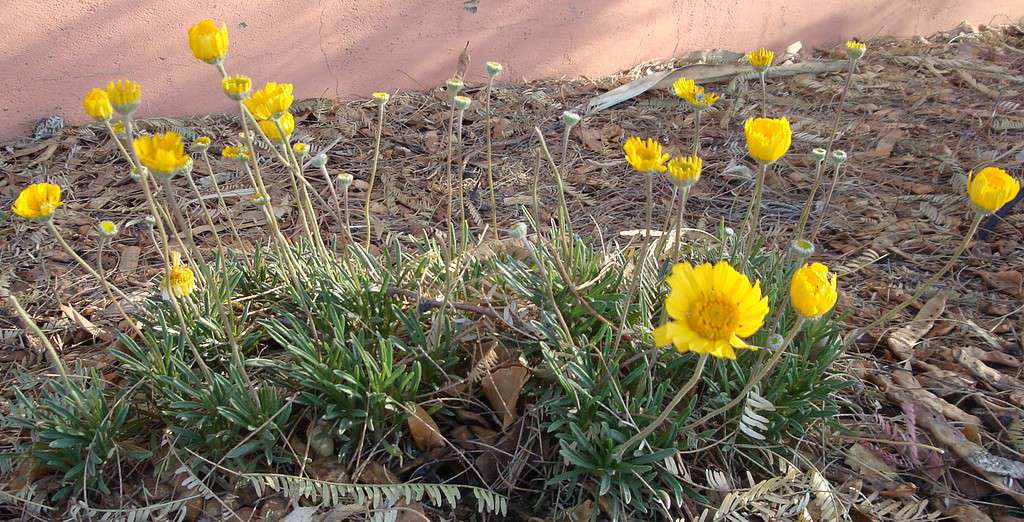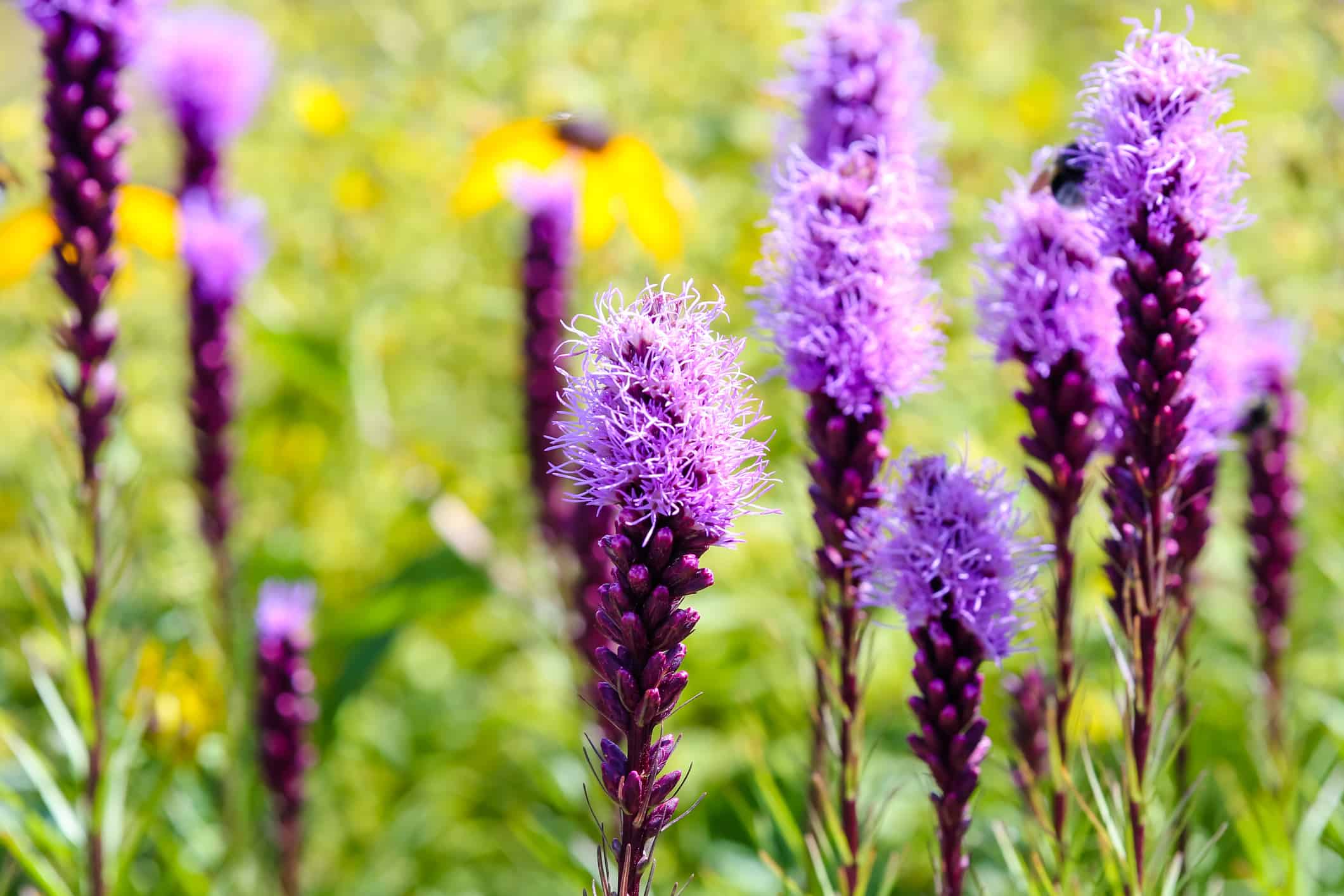Arizona has a reputation for heat —the blistering summers of southern Arizona fill many minds with images of deserts and parched plants. However, the climate of the state changes drastically from the northern to the southern borders. The state even has its fair share of ski resorts! This range can make it hard to choose which flowers to plant in your yard that will survive the dramatics of Arizona’s climate, as well as return to bloom again next year. Here, we’ll explore the nine best perennial flowers that thrive in the heat.
1. Aloe

Aloe’s bright blooms make great additions to any Arizona garden.
©Consultaplantas / CC BY-SA 4.0 - License
A well-known succulent famous for its cooling properties, aloe makes a great addition to gardens in the southern part of Arizona. You may not know aloe for its blooms, but it’s happy to put on a show for you! Aloe’s long-lasting and vibrant blooms provide pops of color during the winter, all the way through to early spring. The colors of the tall, tube-shaped flower clusters range from yellow to pinkish-orange to bright red, making them favorites of hummingbirds and other pollinators. Aloe’s hardiness varies by variety, but in general likes full sun in the winter, with filtered sun in the harsh summers. Experts suggest planting your aloe in containers that can be moved to protect the plant from both frostbite and sunburn.
2. Bird of Paradise (Caesalpinia)

These bright blooms are favorites among pollinators.
©mauro halpern / CC BY 2.0 - License
This probably isn’t the bird of paradise flower you’re thinking of. Sometimes called the Mexican bird of paradise, caesalpinias feature clusters of stunning red, yellow, or orange blooms among their fern-like green foliage. Blooms occur throughout the hot season as the plant enjoys the desert heat. These birds of paradise don’t need much water — perhaps a good soak once a week in the summer and less frequently in spring, fall, and winter. This makes them ideal for Arizona’s scorching summers and periods of drought. In areas with no threat of winter frost, some varieties can reach 10 feet tall!
3. Bougainvillea

The fast-growing bougainvillea offers huge, colorful potential to any garden.
©Flower_Garden/Shutterstock.com
Bougainvilleas offer multiple ways to enjoy these blankets of color. Their varieties include both a dwarf shrub that stays contained to itself and a trailing, vining, sky-reaching climber perfect for training up a trellis. Planted in full sun to filtered shade, bougainvillea thrives in clay soil with infrequent waterings, so long as the occasional waterings reach deep to the roots. They do come with sharp thorns, so careful pruning and training the plant is crucial. The actual flowers of bougainvillea are tiny and usually white, but they’re surrounded by special leaves that display a variety of bright colors. These special leaves, known as bracts, can be white, yellow, pink, purple, orange, red, and anywhere in between!
4. Red Yucca (Hesperaloe)

The long, spindly bloom stalks add visual interest to desert gardens.
©Sylenius, CC BY-SA 3.0 , via Wikimedia Commons - License
Related to the yucca and aloe families, red yucca features long strings of flowers in just about any color you want, ranging from vibrant reds to creamy white. Red yucca tolerates heat, cold, and sparse water, making it a great addition to most Arizona gardens. Experts suggest planting these evergreen perennials in the fall or winter to give them time to establish their roots before they provide summer-long color to your garden. Hummingbirds love the bright tube-shaped flowers, and you will too!
5. Bearded Iris (Iris germanica)

Bearded irises come in a wide variety of colors, perfect for rounding out a garden’s rainbow.
©yuelan/iStock via Getty Images
A typical sign of spring in some climates, bearded irises love the heat. They need a more careful mixture of humus-enriched soil and other nutrients, but can also survive periods of drought and don’t need a lot of excess watering. These unique, curling flowers come in a variety of colors, including mixed colors, to bring just the right shade to your garden! Bearded irises should be planted the first time between July and September. They’ll then bloom through early spring to early summer. Though they love the sun and usually prefer full sun, Arizona gardeners may benefit from planting them in partial shade as protection against the ruthless afternoon sun.
6. Angelita Daisy (Hymenoxys acaulis)

Angelita daisies offer a colorful ground cover option, especially in hot climates.
©Desert Rivers Audubon / CC BY 2.0 - License
These compact desert natives bring bright rays of sunshine to any landscape. Between their yellow blooms and deep green foliage, Angelita daisies provide pops of color year-round. They occur naturally in Arizona and the surrounding sweltering landscapes of New Mexico, Colorado, Nevada, and southern California. Angelita daisies love full sun, continue blooming throughout spring and summer, and only need watering about once every 10 days.
7. Baja Fairy Duster (Calliandra californica)

Baja fairy dusters make a fun and colorful contributor to a pollinator garden.
©Stan Shebs / CC BY-SA 3.0 - License
These unique flowers are ideal in desert gardens and make quite the change from other blooms on our list. Baja fairy dusters exhibit either evergreen or semi-evergreen foliage, offering pops of green year-round. However, in the summer and fall, it puts on a fireworks show! The striking explosion of red, pink, or purple comes from small, whisker-like threads clustered together around the base of the flower. Hummingbirds love the Baja fairy duster, just like the Baja fairy duster loves the heat of the desert. For Arizona gardens, these flowers are ideal for areas with hot days and cooler nights, as their leaves fold closed when the sun goes down.
8. Evening Primrose (Oenothera)

These nighttime beauties make a fast-growing, colorful ground cover.
©Patrick Standish / CC BY 2.0 - License
Evening primrose are well-suited to Arizona’s hot climate, being native to the plains, deserts, and grasslands of North America. These perennial ground covers stay relatively close to the ground and end up carpeting an area with lovely white, pink, or yellow blooms. However, it’s called the evening primrose for a reason — these flowers tend to open at night, but most stay open til about noon. Thanks to their nocturnal schedule, evening primroses will attract a variety of wildlife to your garden in the evenings. Their seeds also make a valuable food source for various desert songbirds, who will no doubt come to serenade you as they snack.
9. Liatris

Liatris keeps its bright blooms going into fall, helping transition your garden into autumn.
©iStock.com/todamo
A North American native, liatris is perfect for hot Arizona gardens as it needs very little water and grows well even in rocky, dry soil. These unique flowers, also called “blazing stars” or “gayfeathers,” sprout tall stalks with flower clusters shaped like a long bottle brush. The clusters feature a great many small, star-shaped flowers that most commonly bloom purple, though white and pink varieties exist too. Liatris’ flowers start blooming from the top of its flower stalk, and spent flowers provide excellent food for birds in the fall and winter. Expect blooms to last from the beginning of summer to early fall.
The photo featured at the top of this post is © MierCat Photography/Shutterstock.com
Thank you for reading! Have some feedback for us? Contact the AZ Animals editorial team.







